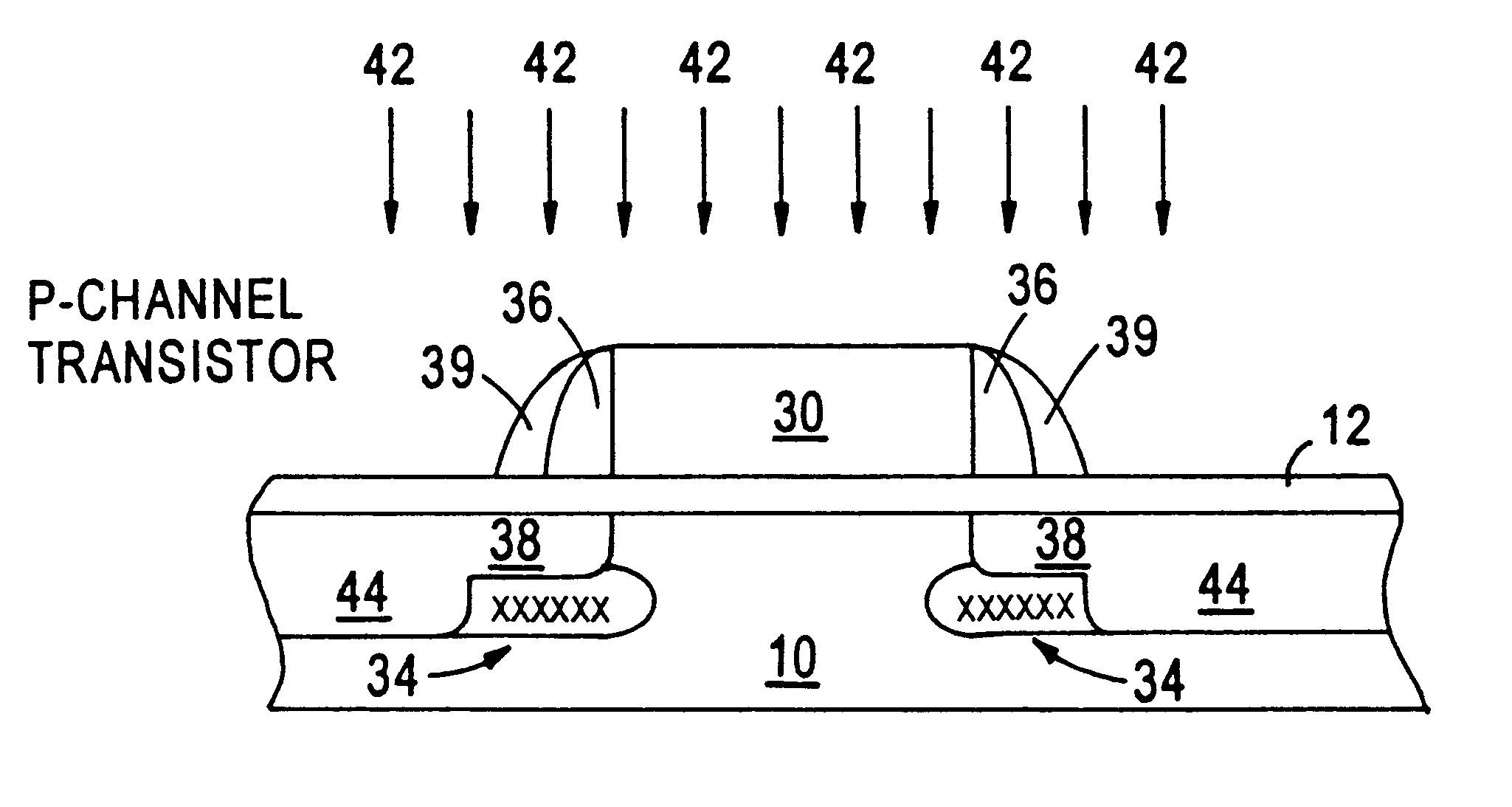CMOS processing employing zero degree halo implant for P-channel transistor
a halo implant and p-channel technology, applied in the direction of transistors, semiconductor devices, electrical apparatus, etc., can solve the problems of reducing the design feature to 0.25 microns, increasing the likelihood of short-channel effects, and challenging the limitations of conventional semiconductor manufacturing techniques
- Summary
- Abstract
- Description
- Claims
- Application Information
AI Technical Summary
Problems solved by technology
Method used
Image
Examples
Embodiment Construction
The present invention provides methodology enabling the manufacture of semiconductor devices exhibiting significantly reduced susceptibility to short channel effects while achieving high production throughput. In accordance with the present invention, halo implant regions are formed at zero degree tilt angles, thereby reducing the number of process steps and saving manufacturing time vis-a-vis conventional practices employing large angle tilt implants.
The present invention also provides methodology enabling control of the junction depth (X.sub.J) of a P-channel transistor independently of the X.sub.J of an N-channel transistor and provides greater independent control of the respective lengths of the channel regions of the P-channel and N-channel transistors.
An embodiment of the present invention is schematically illustrated in FIGS. 2A through 2C. Adverting to FIG. 2A, a gate dielectric layer 12, such as silicon oxide, is formed on semiconductor substrate 10, typically comprising do...
PUM
 Login to View More
Login to View More Abstract
Description
Claims
Application Information
 Login to View More
Login to View More - R&D
- Intellectual Property
- Life Sciences
- Materials
- Tech Scout
- Unparalleled Data Quality
- Higher Quality Content
- 60% Fewer Hallucinations
Browse by: Latest US Patents, China's latest patents, Technical Efficacy Thesaurus, Application Domain, Technology Topic, Popular Technical Reports.
© 2025 PatSnap. All rights reserved.Legal|Privacy policy|Modern Slavery Act Transparency Statement|Sitemap|About US| Contact US: help@patsnap.com



